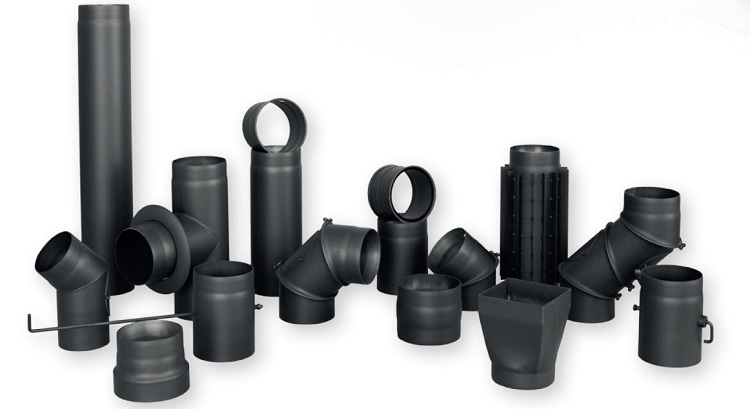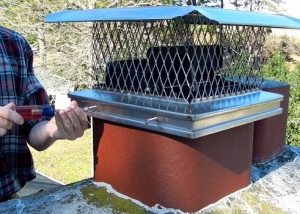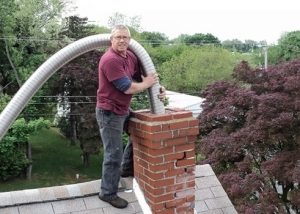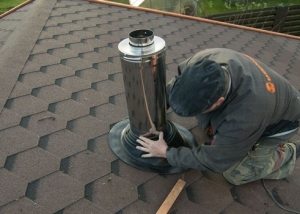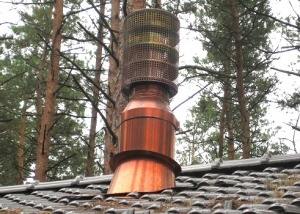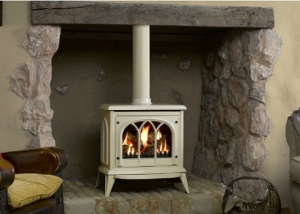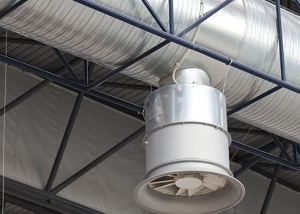Today, there are many chimney utilities, which differ in different indicators: size, traction, purpose. However, they all share a common function - the removal of combustion products from a heater or any other device that produces smoke. In order to understand the variety of chimneys, it is necessary to carefully study their features.
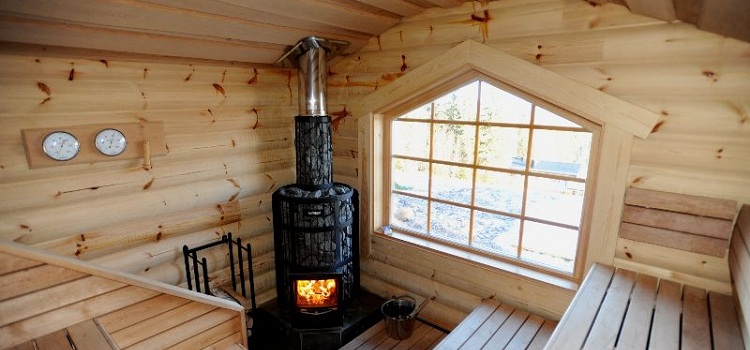
To ensure that the stove in the bathhouse or small private house provides maximum heat transfer, chimneys of special designs are used, which also serve as a heat source
Content
Conveying chimneys
A convector chimney is a device that produces heat transfer and, as a rule, is installed above a heating device or a sauna-built stove. The main function of such a chimney is to accelerate the heating of one room, so it is also called an economizer. Such devices supply heated air to an adjacent room.
Helpful information! Another function of such devices is that they prevent the spread of infrared radiation from chimney channels.
Economizers are made of high alloy steel, which is characterized by increased strength, and is also able to tolerate high temperatures. Such a material is resistant to corrosive influences and resistant to aggressive chemical compounds.
To date, convection chimneys are divided into two main types:
- convector 1;
- convector 2.
In the first case, the device delivers heated air only to one neighboring room, and in the second - to two. The design of the convector 1 includes two pipes and two plates. In turn, the convector 2 is equipped with four pipes and the same number of overlays.
From a structural point of view, such an apparatus is a coaxial pipe, which takes into account the location of one pipe with a lower cross-sectional index in another. An outer pipe is necessary to deliver clean air from the street, which eliminates the possibility of overheating of the structure. The inner pipe of such coaxial communication is used to exhaust combustion products.
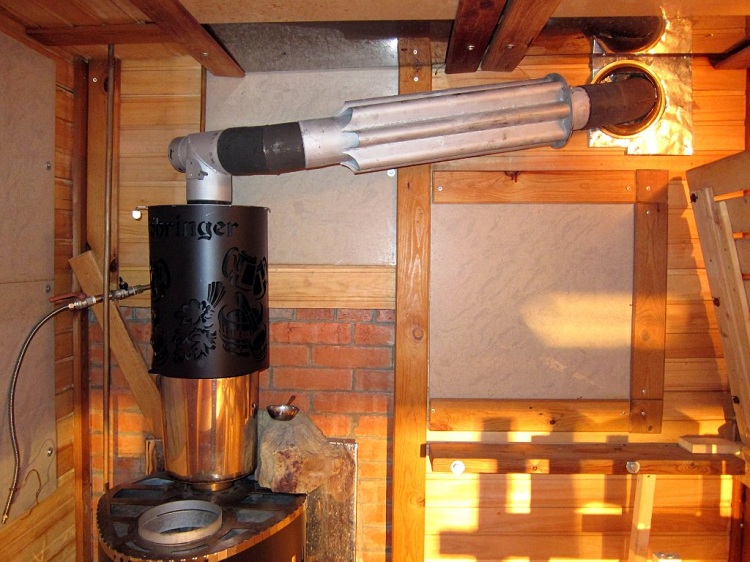
Using a chimney-convector, you can heat not only the room in which the furnace is located, but also adjacent to it
Industrial chimneys: features and varieties
Industrial chimneys - structures that are part of boiler houses and are used only for the removal of combustion products through natural or artificial draft. Artificial draft in such smoke channels is ensured by special devices - smoke exhausters and fans.
Self-supporting metal chimney. Such chimneys have a length of not more than 30 m and can be of two types: single-barrel and multi-barrel. The multi-barrel type designs include several pipes that belong to a common frame. Self-supporting steel chimneys are fixed on the concrete foundation by means of anchors.
Such structures are thermally insulated with mineral wool and, in addition, are equipped with a cylindrical metal rim (shell). The shell is made of different metals: steel, galvanized, aluminum. Advantages of self-supporting metal chimneys:
- affordable price;
- ease of installation.
Among the disadvantages of such structures, only a large mass can be distinguished, which complicates their transportation and installation.
Truss construction. It includes a supporting column (truss), as well as several trunks that have different cross-sectional indicators. The cross-sectional index of the auxiliary trunk in such a design, as a rule, does not exceed 1500 mm. In turn, the supporting column is made of profiled pipe and can be trihedral or tetrahedral. The height of the supporting column does not exceed 50 m.
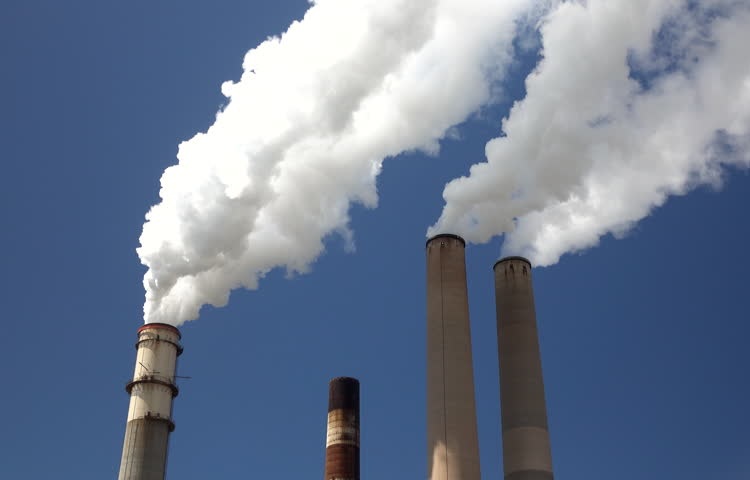
Industrial chimneys come in many types, but they all have one function - they bring combustion products out
The module of this design, through which the gas outlet is carried out, consists of three main layers:
- active chemical resistant inner layer;
- intermediate heat-insulating layer. In most cases, the intermediate layer is represented by mineral wool and has a width of 5 to 6 cm;
- steel sheet outer layer.
Industrial chimneys made of steel of this type have a lower weight in comparison with self-supporting structures, however, their cost is higher.
Column chimneys. Such constructions include a shell and several gas pipes, the cross section of which does not exceed 1500 mm.
Note! The common gas channel is capable of servicing two or three boiler houses (the cross-section index in this case reaches 3,000 mm).
A gas vent material of this type is selected depending on what properties the vent gas has. Equipping the column structures with a heat insulator is a necessary condition, non-observance of which can disrupt the traction in the system. Such communications are recommended for use in low-security facilities, as they are the most protected among all industrial chimneys.
Front gas outlets. Installation of such chimneys is carried out on the finished facade of the boiler room, so the financial costs in this case are minimal. Industrial chimneys of this type are made of steel of a certain brand. The outer layer of such chimneys is made of black steel. The chimney made of black steel is characterized by increased strength characteristics, as well as resistance to high temperatures, which eliminates the possibility of its rapid destruction.
Stretch design. Such chimneys are mounted on braces and secured by stiffening ribs. The barrel in this case is represented by a steel chimney.
Modular chimneys
Modular chimney constructions are a modern solution and, as a rule, are laid in private houses and saunas. From a structural point of view, a modular system is very simple, since it is assembled step by step from individual parts. Thus, the installation process of a modular system is like assembling a designer. The main advantage of such chimneys is the variety of structural elements that allows you to perform chimneys of any shape.
Modular chimneys consist of sandwich pipes and auxiliary fittings. A sandwich pipe is a product that consists of two circuits (internal and external) and an intermediate layer of thermal insulation between them. In most cases, the inner contour of such pipes is made of heat-resistant stainless steel, and the outer one is made of galvanized steel. The wall thickness of the sandwich pipes varies from 0.5 to 1 mm and is selected according to the power of the heating device.
Helpful information! Basalt cotton wool, which can withstand temperatures up to 1000 ° C, is most often used as a heat insulator for modular pipes.
Modular chimneys have an operational life of 10-12 years on average.In the event of failure of any structural element, repair is made without much difficulty: a broken element is simply replaced with a new one. Consider the auxiliary elements of modular chimneys:
- fasteners;
- waterproofing devices;
- transitions;
- bends;
- tee elements;
- connecting parts.
Modular systems include black enameled flues. Such constructions are coated with black enamel and due to this they are inherent in high anti-corrosion qualities. Consider other properties of such chimney ducts:
- resistance to high temperature indicators;
- resistance to active chemicals (acids and alkalis);
- fire resistance of an enameled chimney affects its service life, increasing it;
- black color, giving them a presentable appearance.
Some craftsmen manage to make a modular system for a furnace from cast-iron sewer pipes. Cast iron chimneys have not been produced on a production scale for a long time, however, sewer pipes made of this material are suitable not only for organizing a sewer system, but also for laying chimney communication. A pig-iron stove chimney from sewer pipes should not rest on the stove itself, since it has too much weight (it is recommended to fix it on clamps). Bitumen protection is burned out with a conventional gas burner.
Horizontal chimneys
Today, there are two main ways of laying chimney ducts:
- in the vertical plane;
- in the horizontal plane.
As a rule, flue gas ducts are mounted vertically, however, horizontal systems are used in cases where it is necessary to increase the heat intake. Smoke transported in areas located in the horizontal plane transfers heat energy much better.
The main disadvantage of such channels is their predisposition to clogging, so the organization of horizontal communications requires not only compliance with all necessary building codes and rules, but also preventive cleanings from time to time. In order to facilitate cleaning, the horizontal chimney is equipped with special viewing windows or hatches through which it is not difficult to get to a clogged area.
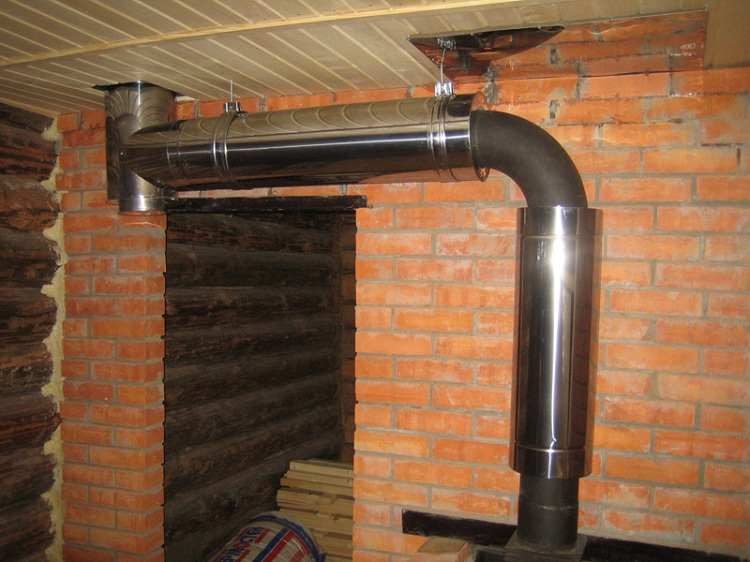
To give more heat from the chimney to the room, horizontal sections can be arranged, but their length should be small so that the draft is not reduced
Note! There are special horizontal structures that are joined with vertical ones and form a single system. Gas moving through pipes in such a system effectively transfers its heat, which contributes to the heating of horizontal sections.
Chimneys for barbecue and barbecue
How to choose a chimney for barbecue? Braziers and barbecue are devices used for cooking and differing in a constructive way. The differences between these devices are a fundamental factor in choosing a chimney. Consider the features of these devices in more detail:
- Brazier. This fixture is a rectangular box (open at the top). In the lower part of such a box there are round openings providing air flow. In this case, the heat affects the cooked product from the bottom and sides.
- B-B-Q. Such a device has one indisputable advantage - the ability to regulate air flow.
Hoods for the above devices are usually made of sheet steel, which has a thickness of up to 2 mm. However, you can find designs made of copper alloy, which have a high aesthetics.
Hoods include two main elements:
- smoke dome that has a domed shape.The diameter of this element can reach 1500 mm;
- a pipe mating with the top of the chimney cap.
When choosing a chimney for a barbecue or barbecue, you need to build on the design features of these cooking appliances. Therefore, experts recommend paying attention to the size of barbecues and barbecue, as well as to geometric characteristics.

